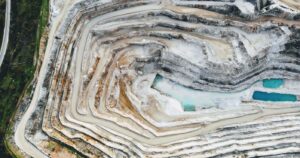Novel Fusion Systems: Z Pinch and Levitated Dipole Fusion Technologies
A few months ago, an article in The Economist highlighted six key players in the private fusion landscape. If you’re familiar with the space, you won’t be surprised to see General Fusion, Tokamak Energy, First Light Fusion, Commonwealth Fusion Systems, Helion Energy and TAE Technologies mentioned. These innovators were noted as the heavy hitters in the field, but there are 36 other firms also looking to advance fusion technologies that were written off as “tiddlers.”
While there is no doubt those mentioned have achieved impressive milestones and have raised substantial capital, other companies looking to commercialize fusion power should not be overlooked. Z Pinch companies like Magneto-Inertial Fusion Technologies, Inc. (MIFTI) and Zap Energy are accelerating, levitated dipole reactors like OpenStar Technologies, and modular fusion system developers like those pioneered by Avalanche Energy, Electric Fusion Systems and Compact Fusion Systems, offer innovative designs that may provide a faster pathway to net energy gain, given their smaller, lower cost, fusion-based reactor constructs.
Key Fusion Milestone: Achieving Breakeven
Larger companies will play an important role in connecting nuclear fusion systems to the grid and in the overall journey towards commercialization. But some of these smaller innovators may also play a sizable role as potentially the first to achieve “breakeven” and ultimately “ignition,” commonly known as net energy gain, or an exponentially higher energy output in relation to the energy required to produce the effect. This is the key milestone that private companies are looking to achieve.
So far, Lawrence Livermore National Laboratory (LLNL) is the only entity to achieve a significant advancement in fusion energy gain using Inertial Confinement Fusion (ICF) systems that require a costly and complex assembly of high-powered lasers. The LLNL scientists have twice successfully applied almost 400 MJ of energy producing 2MJ of laser energy that was then absorbed in a target to produce 3MJ of fusion energy, thus achieving what is termed “scientific breakeven.”
In this case, the fusion energy produced by the reaction was more than the energy absorbed by the target from the lasers. However, although ICF systems were the first to prove controlled nuclear fusion breakeven was possible, there is still a long pathway forward for these types of technologies to be scalable and repeatable on a commercial level. On the other hand, technologies like magnetic confinement fusion (MCF) systems that are rapidly developing, which use high powered magnets and include system configurations like tokamaks and stellarators, are looking to overcome challenges related to plasma stability and the engineering of highly complex systems.
Z Pinch Fusion Configurations
Z Pinch fusion systems, like those pioneered by MIFTI and Zap Energy, do not face many of these challenges. Z Pinch works by using the same deuterium, and sometimes tritium, isotopes of hydrogen for fuel. However, in this case, a large current is passed through the plasma, compressing and pinching the plasma into a column — thus stabilizing it. This system does not require expensive magnets or lasers and allows the ions to collide and “fuse” together and produce a neutron yield. These fusion-propagated neutrons are “captured” in sufficient quantity to generate heat and thus produce power for electricity. Both MIFTI and Zap have made significant strides in this field.
MIFTI was founded in 2008 by scientists working at the University of California, Irvine (UCI) and California-based entrepreneurs. The MIFTI team is developing their staged Z-pinch (SZP) system; a multi-layered pinch that uses a cylindrical, fusible target plasma that is surrounded by concentric shell liner plasma made of high-Z radiative plasma. A fast-rising current pulse compresses this cylindrical load of multi-layered plasma that allows for shock heating and then compressional heating of the fusible plasma target to an extremely high density and temperature greater than 10KeV.
Since MIFTI’s SZP reaction produces a stable, very high density, high temperature plasma, it leads to a much higher fusion energy yield as compared to the other concepts. Computer modelling for scale-up predicts that SZP technology, using a current of more than 10 MA, can produce a net gain in fusion energy.
MIFTI’s President and Chief Scientist, Dr. Hafiz Rahman, reports that recent test results on the L3 Harris 4 MA machine in San Leandro, California, set at a current level of 3 MA, produced remarkably stable results that met all advanced computer code predictions. Dr. Rahman further elaborated that MIFTI’s recent experiments at L3 Harris produced a neutron yield of 10 to the 11th power; the highest level ever achieved by any private company in the world. MIFTI has accomplished this significant success on an overall budget of $12M, including a $5.1M DoE Advanced Research Projects Agency – Energy (DOE/ARPA-E) grant.
Zap Energy has also been accelerating the development of Z-pinch systems. Zap has raised substantial funding from investors. They raised $160M in 2022 to advance their sheared flow Z-pinch system. Zap’s sheared flow motion fusion technology results from the geometry of a nose cone that makes parts of the plasma ring move at different speeds which produces a stabilizing effect. Zap had also received a $5M grant from the Milestone-Based Fusion Development Program earlier this year.
Levitated Dipole Fusion Reactor
Another reactor type that has yet to grab headlines is the levitated dipole magnetic confinement fusion system. OpenStar Technologies (Wellington, New Zealand) is the only company on the list of the FIA’s 43 member companies that is using this approach. The levitated dipole fusion reactor consists of a large vacuum chamber containing a floating magnet which operates almost like the opposite of a tokamak. In standard MCF reactors, like tokamaks and stellarators, the magnets surround the plasma. In the case of the levitated dipole reactor, however, the plasma surrounds the suspended magnet.
Levitated dipole systems have higher betas than tokamaks and stellarators, meaning cheaper magnets can be used more effectively and the plasma turbulence that would typically pose challenges for tokamaks and other MCF systems allows the reactor to maintain pinched pressure profiles actually creating a stabilizing effect on the plasma. This opens a pathway towards fusion and achieving breakeven by allowing for rapid development and testing.
Furthermore, recent advancements in HTS (high-temperature superconductor) magnets and OpenStar’s innovative process for creating onboard superconducting power supplies, will advance the conditions needed to make fusion a reality. Their loosely-coupled process allows for components to be developed in parallel and on a compressed time scale. By overcoming some of the challenges other well-known fusion companies have with plasma instabilities and manufacturing systems using large expensive magnets and lasers, OpenStar’s levitated dipole fusion reactor system paves the way towards a reactor that can rapidly be tested and developed.
Looking Ahead:
While MIFTI, Zap Energy, and Open Star Technologies may not be the first companies that come to mind when we think of leaders in the nuclear fusion race, their lower cost fusion systems should not be overlooked. Creating commercial fusion systems will require a wide variety of technology types and the build out of different supply chains. Novel fusion systems that overcome the challenges larger fusion systems have may allow us to reach breakeven and develop grid connected systems sooner than we think.
The climate crisis will require various solutions to provide a safe and sustainable alternative to fossil fuels and we will need to take an in-depth look and deeply explore the variety of ways to achieve carbon-free baseload power through fusion and novel fusion systems.



